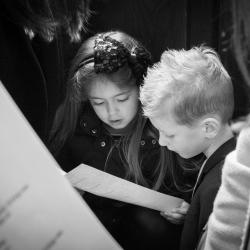H.H. Michael en Clemens
Rotterdam, NL
The HH Michaël en Clemenskerk originally belonged to the Capuchin Order. Around 1916, the Capuchins made the first plans to found a monastery in Rotterdam. Initially, they focused on the Katendrecht district. In 1918, they even bought a piece of land (located between Maashaven NZ and Tolhuislaan). However, this turned out to be unfavourably located and in 1922 it was bought back by the municipality. Instead of building a new monastery, they bought a building on Rechthuislaan where a small community settled from December 1921 onwards. The ground floor served as a church. The whole was consecrated on 29 December 1921.





